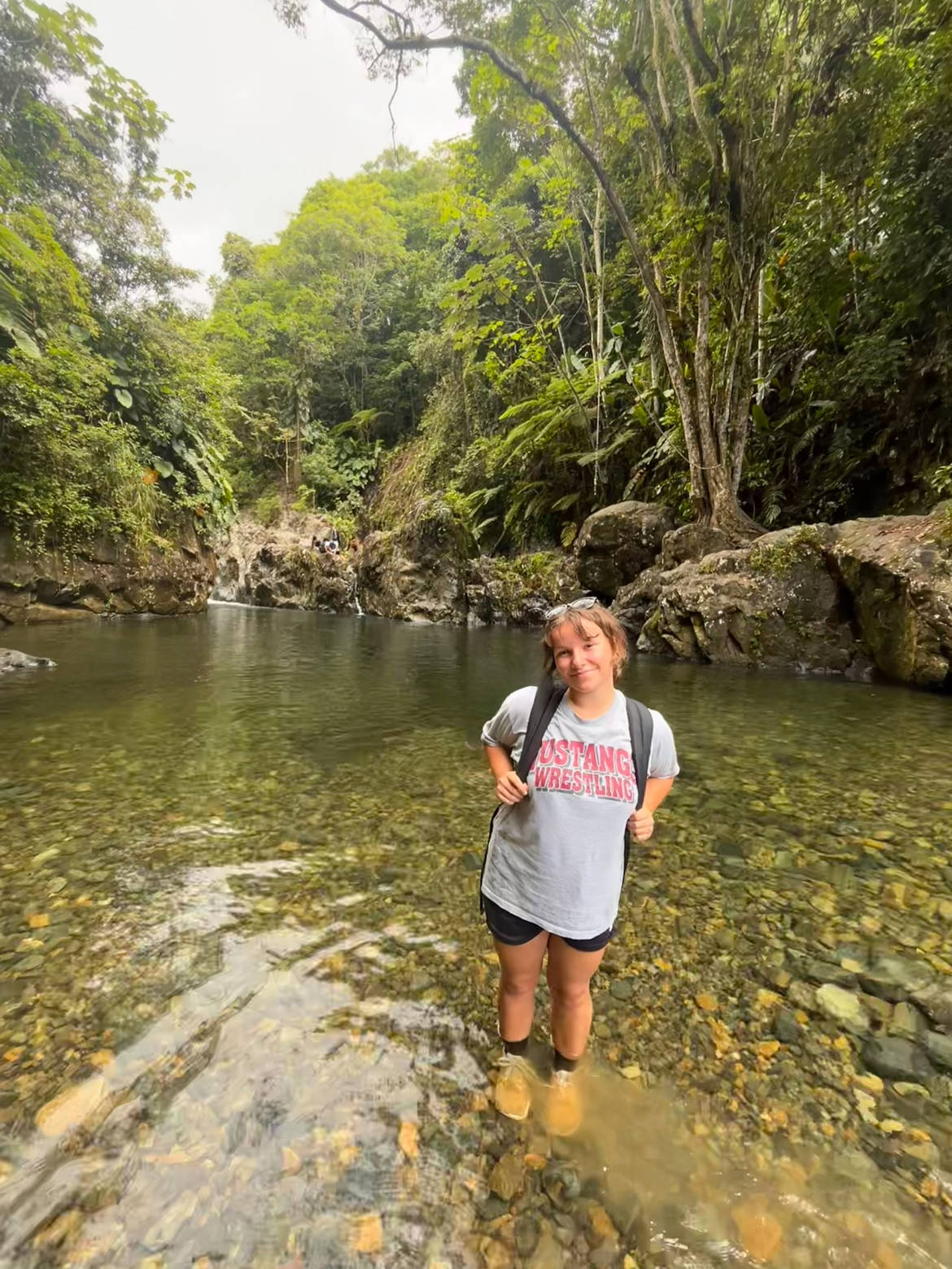Media contact: Brianna Hoge
 UAB Blazer, Chloe Naquin, spent nine weeks in Puerto Rico studying the Cuban tree frog as part of the NSF’s Research Experience for Undergraduates program.Spending several weeks on a Caribbean island may sound like a nice way for a college student to unwind during a summer vacation. But when University of Alabama at Birmingham student Chloe Naquin spent the summer of 2024 in Puerto Rico, it was not a relaxing vacation. Rather, Naquin’s time on the island was spent largely in the company of a certain poisonous frog.
UAB Blazer, Chloe Naquin, spent nine weeks in Puerto Rico studying the Cuban tree frog as part of the NSF’s Research Experience for Undergraduates program.Spending several weeks on a Caribbean island may sound like a nice way for a college student to unwind during a summer vacation. But when University of Alabama at Birmingham student Chloe Naquin spent the summer of 2024 in Puerto Rico, it was not a relaxing vacation. Rather, Naquin’s time on the island was spent largely in the company of a certain poisonous frog.
While tourists soaked up the sun, the Millbrook, Alabama, native spent her days in a lab taking part in a research experience funded by the National Science Foundation.
Naquin, a junior majoring in biomedical engineering at the UAB School of Engineering, spent nine weeks conducting research at American University of Puerto Rico as part of the NSF’s Research Experience for Undergraduates program. Her task: studying the “untargeted metabolomics of the Cuban tree frog.”
“The Cuban tree frog secretes an unknown toxin, so we wanted to study the toxin and hopefully identify it,” Naquin said. “This is an important topic because many secretions from amphibians are known to produce remarkable healing capabilities, whether it’s anti-bacterial, anti-tumor, etc. Understanding the makeup of this particular toxin could prove very beneficial to the medical field.”
Naquin was one of a cohort of eight undergraduates assigned to the research center in Puerto Rico, each student being assigned to a different project. Naquin worked full time in a lab extracting small molecules from the glands of the frog and using various mass spectrometry databases to identify the molecules.
Though most of her time was spent in the lab, Naquin did find time to explore the island, visit beautiful beaches, explore caves, and experience the culture and food.
“I was very nervous going into it, because I don’t speak Spanish, and I knew there would be a steep learning curve in the lab,” Naquin said. “But I worked under a principal investigator, and I also had a mentor in the lab who was with me every day. Looking back, it was great to be part of a community of people who have similar ambitions. It was a very supportive environment where we learned a lot.”
Click here to learn more about the Department of Biomedical Engineering.
While the jump from sophomore courses in the spring to Cuban tree frogs in the summer may seem extreme, the REU experience was not the first time Naquin had traveled for research. She says materials engineering Professor Robin Foley, Ph.D., encouraged her not to wait about seeking out research opportunities.
Naquin took that advice to heart, and the summer after her freshman year at UAB, she traveled to Duke University to conduct research in a mechanical engineering lab. In that project, she conducted experiments using an acoustic fluid mini centrifuge for early cancer diagnostics. The work resulted in a paper she co-wrote being published in the journal Science Advances.
“The thing that excites me about these experiences is that the researchers really value the contributions of undergraduates in their labs,” Naquin said. “It’s not a passive learning experience; but rather it’s a job where we are given the tools and guidance, and we are expected to produce results.”
Naquin says if there is one thing people can learn from her experience, she hopes it is that these programs are available.
“I don’t know how many undergraduates know about the REU program. Students do not have to wait until they are a senior or in graduate school to get involved in meaningful research.”